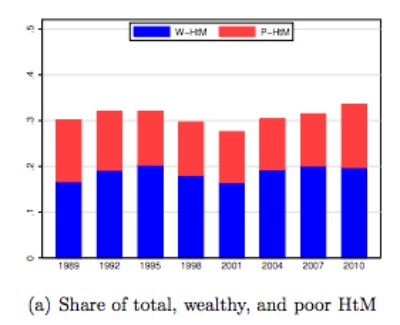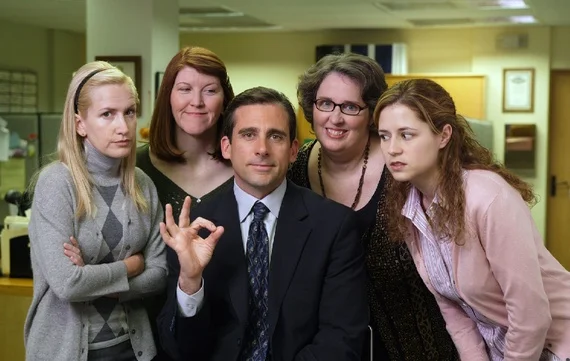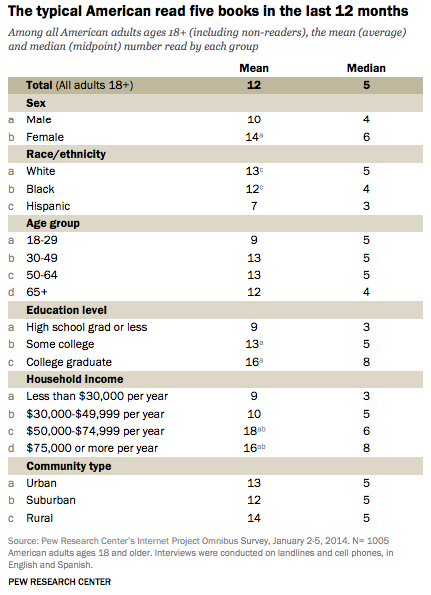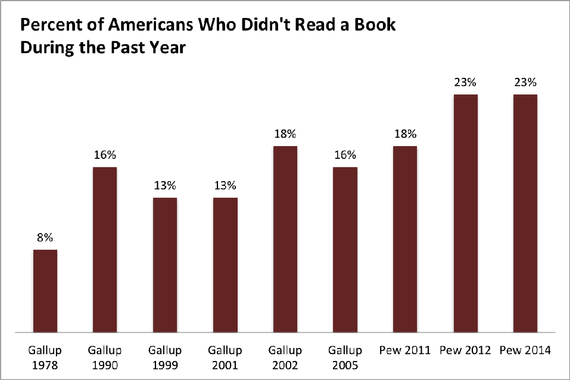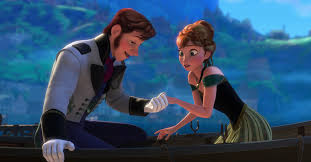Bad Kissingen is a spa town. According to the town’s website, Bavarian King Ludwig II bestowed the “Bad” part of its name on it in 1883, but not because he didn’t enjoy his stay—“bad” means “bath” or “spa” in German. Just south of the Rhön Mountains in Germany, it’s quaintly charming in the way of small European towns (it has a population of about 20,000), particularly those reliant on tourists.
Apparently there’s a bit of a competition among European spa towns—“medical tourism” brings people who want special, specific treatments, or the cheapest possible version of a treatment. So Dr. Thomas Kantermann, of the University of Groningen in the Netherlands, tells me. A friend of his, Michael Wieden, is the official business developer of Bad Kissingen.
“He joined with me to think—if we want to pimp this town, if we want to make it more sexy and attractive, how can we do it?” Kantermann says.
Wieden sought Kantermann out for his particular expertise—Kantermann is a chronobiologist, meaning he studies the differences in people’s circadian rhythms and sleep patterns. A person’s preferred sleep pattern is his or her “chronotype.” This is what we’re talking about when we say someone is a morning person or a night owl. Research has shown that living outside your chronotype, which most of us do—waking ourselves up early with an alarm clock for school or work, or staying out too late at the bars—can lead to all kinds of problems other than just being tired: poor memory, depression, obesity, even a greater risk for some kinds of cancer.
Sleep is mysterious, and we don’t totally understand why we need it—just that we do, and bad things happen if we don’t get enough of it. On average, we spend around 30 percent of our lives asleep, but as a review of the literature on circadian rhythms from 2005 notes, “The introduction of artificial lighting and the restructuring of working hours has progressively detached our species from the 24-hour cycle of light and dark. … At best we tolerate the fact that we need to sleep, and at worst we think of sleep as an illness that needs a cure.”
Not so in Bad Kissingen.
Though the initiative’s sexiness is perhaps debatable, in an effort to stand out from the pack and improve the lives of its citizens and visitors, Bad Kissingen has committed itself to finding ways to implement chronobiology into the fabric of the town’s society.
“The history of Bad Kissingen has [always] been linked to curation and health,” Wieden says. “We have 17 hospitals, sanatoriums and rehabs. We have about 250,000 guests per year. Hence, tourism and health treatment are closely linked in Bad Kissingen. Therefore, to me, Bad Kissingen is the best place in the world to start a ‘whole city project’ like this.”
Russell Foster, a professor of neuroscience at Oxford University, studies chronobiology but is not involved in the Bad Kissingen project. “Changing behavior in any area is really difficult,” he says, and notes a classic study in which researchers observed a population of monkeys slowly learning to wash their food in the ocean to get the sand off. “The ones that were slowest to adopt [the washing behavior] were at the top of the social hierarchy.” Similarly, if those in charge of scheduling our lives—school boards, bosses, etc.—aren’t amenable to change, it’s next to impossible to truly sleep like yourself.
But there Bad Kissingen has the advantage of buy-in from the top. Kantermann is the project’s scientific manager, and in July 2013, he, Wieden, Bad Kissingen’s mayor and town council, and other researchers from the University of Groningen and the Ludwig Maximilian University of Munich signed a letter of intent. In that letter, they pledged to promote chronobiology research in the town, to “gather results that are directly applicable to living, education, work, well-being, health, mobility, rehabilitation, and sleep.” It goes on to claim that “the city of Bad Kissingen will be the first in the world realizing scientific field studies in a wider context.” Those involved often refer to Bad Kissingen as “ChronoCity.”
Though it was first conceived more than a year ago, the project is still in its infancy—it takes time and careful planning to do anything on this scale. Plus, Kantermann says, they need more money.
The goal is to get all of the town’s citizens’ chronotypes in an online database. Right now, individuals have to go to this website and input their own data; the hope is that one day schools and hospitals will take down this information as regularly as someone’s height or weight, making it much easier to determine and work with the town’s needs.
* * *
The roots of the field of chronobiology are actually leaves. The concept was born in France in 1729, when astronomer Jean-Jacques d'Ortous de Mairan noticed that the leaves of his heliotrope plant closed and opened at the same time every day. So he enclosed the plant in a dark space, and found that the leaves continued their punctual dance, sun or no sun.
In this way, humans are not unlike plants, as German biologist Jürgen Aschoff discovered in the 1950’s. He built an underground bunker, where human subjects would stay, cut off from light, sound, and the Earth’s vibrations, so they would have no way to tell what time of day it was. (He went in the bunker himself, first, before experimenting on others.) Most people still kept pretty close to a 24-hour day, though some went for 48 hours, and slept for 16. This confirmed Aschoff’s earlier research (which he also did on himself) that found that that humans lose body heat in regular, 24-hour patterns. Along with U.S. biologist Colin Pittendrigh, Aschoff is considered a co-founder of the field of chronobiology. Fitting, then, that a German town should be the first to try to take chronobiology mainstream.
“It’s a quite young field actually, especially the human part,” Kantermann says. “It’s only 50 to 60 years old. Now we have more sophisticated sleep labs where we do it, though, [instead of] a bunker.”
Kantermann explains that the way we measure someone’s chronotype now uses a metric called “mid-sleep.” This is the halfway point between when you fall asleep, and when you wake up. So if you go to bed at midnight, and get your recommended eight hours, waking up at 8 a.m., your mid-sleep would be 4 a.m.
Teenagers, it is widely known, have some of the latest chronotypes around. Their mid-sleep is often as late as 6 or 7 a.m., according to Kantermann. “We have school starting at that time in Germany, at half past seven, or 8 o’clock, which means these students are sitting [in class] in the middle of their biological night,” he says.
Considering teens’ reliably late chronotypes, the one concrete step that Bad Kissingen has taken so far was to do a couple of studies this past summer at the local high school, looking at how light exposure affects students’ chronotypes, and in turn, how their chronotypes affect their academic performance. The data is still being analyzed, so Kantermann can’t discuss the results yet, but he is hopeful that the experiments will yield a way to help shift students’ chronotype using light.
It would seem that the easiest solution would be to just start school later, and studies have shown this to have real results. For example, in 1997, the Minneapolis Public School District changed its start time from 7:15 a.m. to 8:40 a.m., and a four-year longitudinal study found that students were notably less tardy, less depressed, and less sleepy during class with the later start time. And they really were getting more sleep. The data showed the students still went to bed at around the same time as they had before—they weren’t using the later start time as an excuse to stay up late.
But changing the school schedule presents a whole host of logistical issues—after school activities may run later, or parents may have trouble dropping kids off, especially if you don’t also shift the start time for elementary and middle-schoolers, who have naturally earlier chronotypes. In Bad Kissingen specifically, Kantermann notes that many students bus in from neighboring villages, and sometimes have commutes that are an hour or two long. So they’d still have to wake up pretty early.
If changing school start time isn’t possible, Kantermann suggests moving things around within the existing school structure—pushing tests to the afternoon when students are more alert, or having outside physical activity in the morning to expose them to more natural light.
These logistical issues apply to work as well. “Your employer should ideally capture the time of day when you’re going to be most productive,” Foster says. Adult chronotypes, though, can’t be as easily lumped together as late-sleeping teens. In fact, a 2004 study (on which Till Roenneberg, of LMU Munich, who is also involved in the Bad Kissingen project, was lead author) suggested that in fact, the disappearance of this extra-late chronotype is a sign that adolescence is over.
“Children are early chronotypes and become progressively later (delaying) during development, reaching a maximum in their ‘lateness’ at around the age of 20,” the study reads. “After 20, they become earlier again (advancing) with increasing age.”
However, if you’re naturally a night owl, shedding the angsty, late-sleeping skin of your youth won’t make you into a morning person. According to this study, you’ll still be a night owl—just less extremely.
“An individual is likely to retain his/her chronotype—in relationship to others of the same age and sex—throughout life,” the researchers write. Other studies corroborate this assertion that one’s chronotype is at least partly genetic.
Another Roenneberg study, this one from 2003, asserts that despite our morning-oriented society, early risers are actually in the minority. This is largely to do with our dissociation from natural light. Light, the study explains, is the major zeitgeber for our internal clocks. Zeitgeber is a German word, coined by Aschoff, that means “time giver” or “synchronizer.” Chronobiologists use it to refer to cues in the environment that synchronize our internal clocks with the Earth’s 24-hour cycle.
“Later distribution of chronotypes is, at least partly, due to the absence of a strong zeitgeber in modern society,” the study reads. Our bodies don’t react as strongly to artificial light as to natural light (although, in the total absence of natural light, we’ll eventually respond to mankind’s bulbs), so a society built on electrical light results in more late chronotypes than one reliant on sunshine. And yet our fluorescent office culture is still geared toward early chronotypes.
On the other side of the coin are shift workers, who, depending on their schedule, may have a sleep pattern that’s completely opposite of the cycle of natural light. Though late chronotypes may have an easier time with this work schedule, night shift workers have been shown to be at greater risk for certain kinds of cancer, because disrupted sleep can impair the immune system. In Bad Kissingen, Kantermann says, shift workers are mostly health care professionals—doctors, nurses, etc.—people you generally want to be well-rested.
If this sounds like a lot of problems with not a lot of solutions, well, it is. Even with the abundance of research available, there are practical problems to consider.
“The project seems quite challenging, attempting to accommodate individuals yet maintain a societal framework,” Mary Carskadon, director of chronobiology and sleep research at Bradley Hospital, and psychiatry professor at Brown University, told me in an email. “I can think of a number of barriers that might arise, including occupational misfits, or challenges to family life, or unavailability of resources that might be required.”
Foster also expressed concern that enthusiasm for sleep-improving projects tends to peter out over time, that people just don’t take the importance of sleep seriously, and efforts aren’t sustainable. But he praised the questionnaire Kantermann et. al are using to measure chronotypes, saying they already have the data of “tens of thousands of people all across Europe,” enough data to be able to analyze it and make generalizations about populations.
The signers of the letter of intent pledged to meet five times a year to talk about how things are progressing—Kantermann says their next meeting will probably be in March, and he’s just glad people keep coming back; that, so far, interest hasn’t petered out on a project that, by its nature, is a bit of a long game.
The next step, Kantermann says, is to experiment with the lighting in local clinics, hotels, and possibly even the town hall. The ChronoCity project is partnering with lighting companies to help make that possible. “We have to just manipulate a bit here and there,” he says. “If we change too much, you will see an effect, but then it’s hard to determine what happened, so we have to be careful that we don’t change too much.”
Though they’re currently taking small bites out of this whale of a project, Kantermann is dreaming big.
“My great aim for this town is to make Bad Kissingen the first town in Germany that abolishes Daylight Savings Time,” he says. “So the people can decide for themselves to change their clocks or not… To make this really a place where your internal time is acknowledged.”
In a hypothetical future world where Bad Kissingen succeeds in letting all of its citizens and visitors live out their chronotypes, the societal benefits would be huge. The town as a whole would be more creative, happier, and more alert. Social interaction would improve, as would the population’s ability to problem-solve. Chronically tired people often struggle with obesity, immune suppression, and mental illness, so the town’s overall health—both mental and physical—would improve.
“Maybe this village will ultimately change its behavior,” Foster says. “This hasn’t been tried before, so they’ll learn the best way of keeping the town on board. Thomas [Kantermann] is very good at interacting with people, so if anybody can do this, I suspect he will be able to.”
Perhaps Bad Kissingen will be the sleep equivalent of the first monkey to wash its food—a harbinger of societal change to come.
Via The Atlantic

